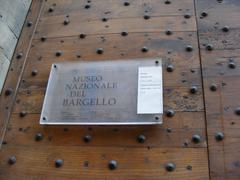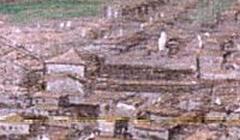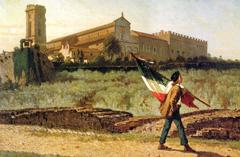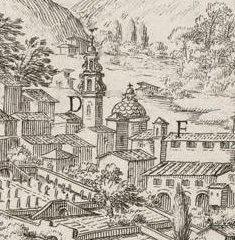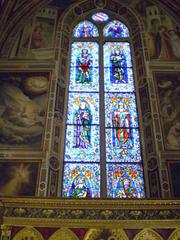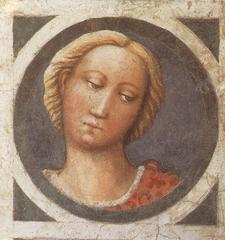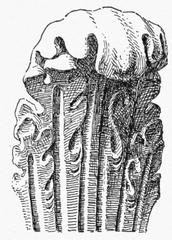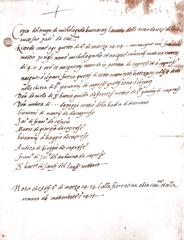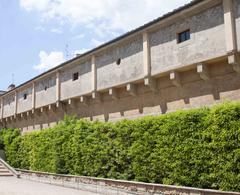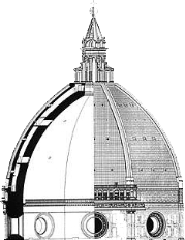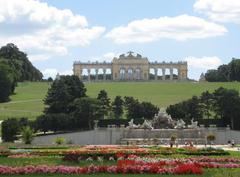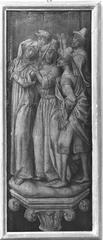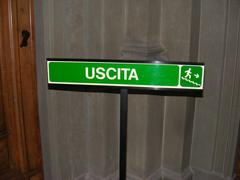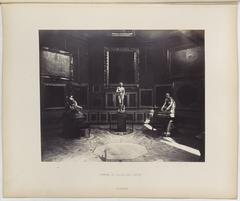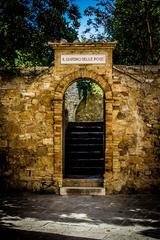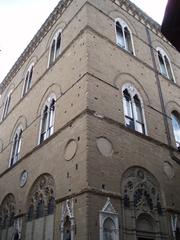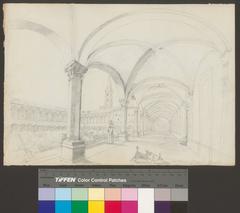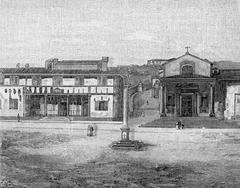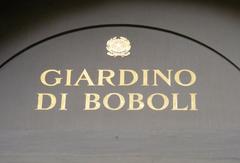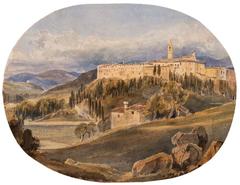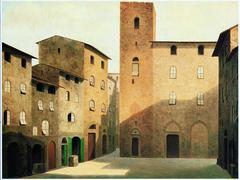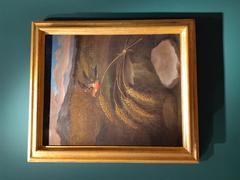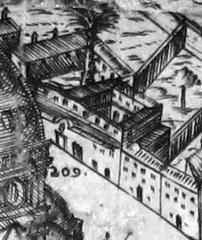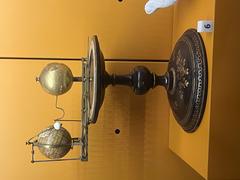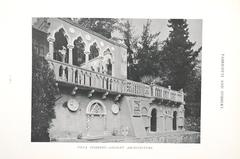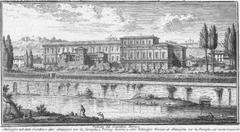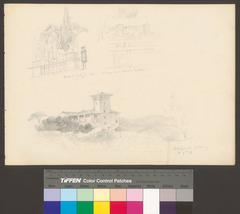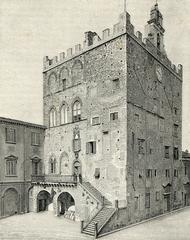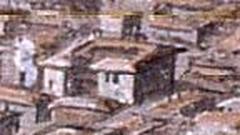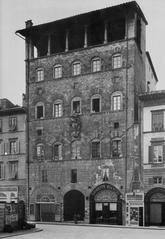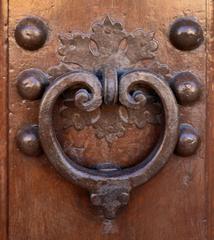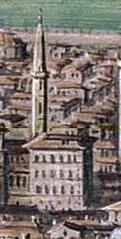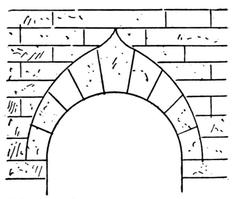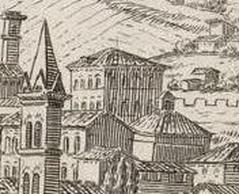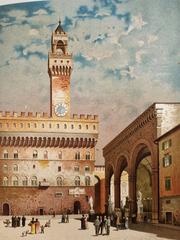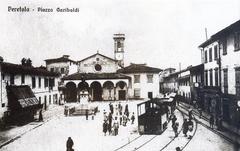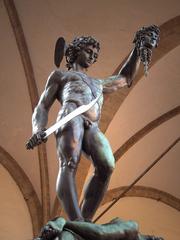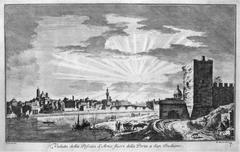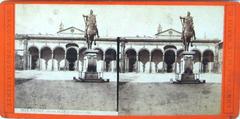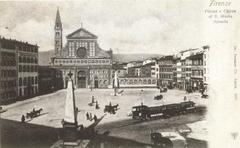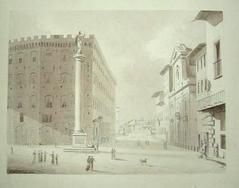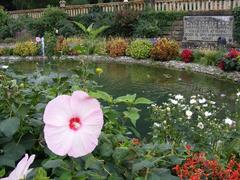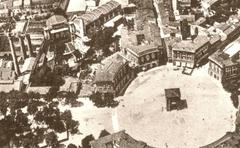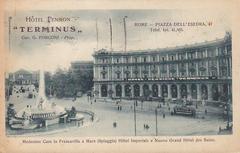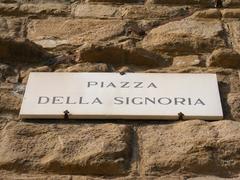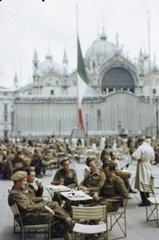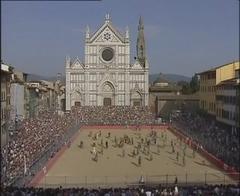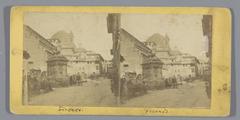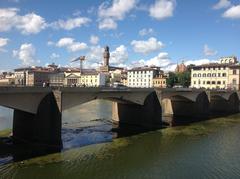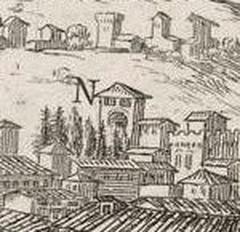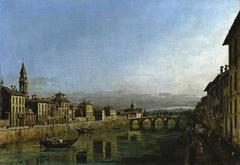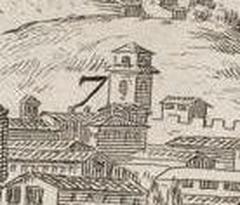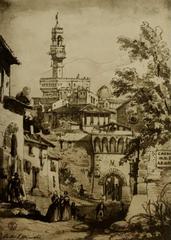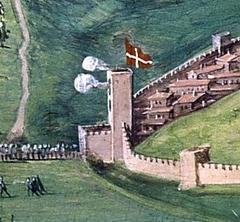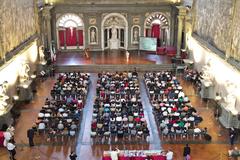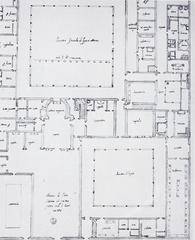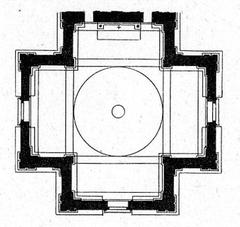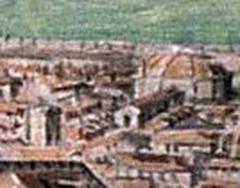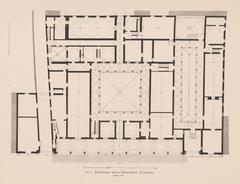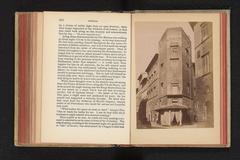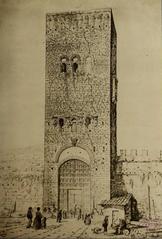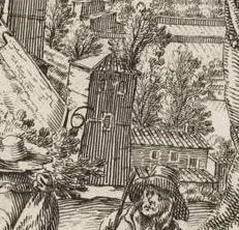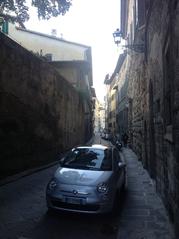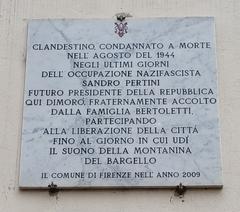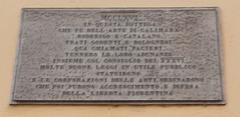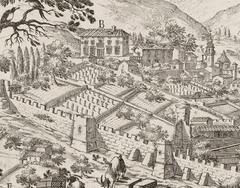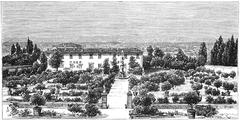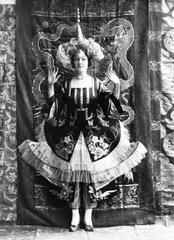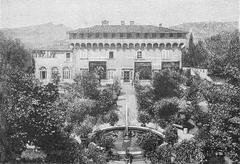J

Jardín De Las Caballerizas Reales Y Edificio De Los Pajareras
{'date': '03/07/2025', 'task': {'model': 'gpt-4.1-mini', 'query': 'Comprehensive guide to visiting Garden Of The Royal Stables And Building Of The Haylofts, Florence, Italy: history, significance, visitor tips, and everything tourists need to know for a memorable experience.', 'verbose': False, 'guidelines': ["Keyword Research: Identify relevant keywords that potential visitors are likely to search for, such as '[Monument Name] visiting hours,' '[Monument Name] tickets,' and '[City] historical sites.' Use these keywords strategically throughout the article, including in the title, headers, and body text, but avoid keyword stuffing.", 'Engaging and Informative Title: Craft a title that is both SEO-friendly and compelling to encourage clicks. Include the main keyword and make it clear what the article will cover.', 'Structured Content: Use headings (H1, H2, H3) to organize the content effectively. This helps with SEO and makes the article easier for readers to navigate. Include an introduction that hooks the reader, a detailed body that covers all relevant aspects, and a conclusion that summarizes the key points.', 'Comprehensive Coverage: Address common questions and topics of interest such as the history of the monument, its cultural significance, visitor information (e.g., ticket prices, opening hours), travel tips, nearby attractions, and accessibility. Include sections that might be unique to the monument, like special events, guided tours, and photographic spots.', 'Quality Content: Ensure the content is well-researched, accurate, and provides real value to readers. Use reliable sources and provide factual information. Write in a clear, engaging, and accessible style. Consider your audience and use language that is appropriate for those likely to visit the monument.', 'Visuals and Media: Incorporate high-quality images or videos of the monument. These should be optimized for the web (correct sizing, alt tags with keywords). Consider interactive elements like virtual tours or maps.', 'Internal and External Links: Include links to other related articles on your site to encourage deeper engagement (internal links). Link to official websites for the monument or credible sources for further reading (external links).', 'FAQ: Incorporate FAQ sections to target voice search queries and featured snippets', 'Visit and Stay Up to Date: End the article with a call to action, such as encouraging readers to download our mobile app Audiala, check out other related posts, or follow on social media for more updates.'], 'max_sections': 4, 'publish_formats': {'pdf': False, 'docx': False, 'markdown': True}, 'follow_guidelines': True}, 'title': 'Comprehensive Guide to Visiting the Garden of the Royal Stables and Building of the Haylofts, Florence, Italy', 'report': '# Garden of the Royal Stables and Building of the Haylofts Florence: Visiting Hours, Tickets, and Historical Sites Guide\n\n#### Date: 03/07/2025\n\n## Introduction\n\nThe Garden of the Royal Stables and the Building of the Haylofts in Florence, Italy, offer a compelling journey through the city’s rich layers of history, architecture, and cultural evolution. Set adjacent to the iconic Palazzo Pitti and the renowned Boboli Gardens in the Oltrarno district, these historic structures illustrate Florence’s transformation from its Roman foundations to the Renaissance, Baroque, and modern eras. Originally conceived as essential service buildings for Florence’s ruling elite, they now stand as preserved landmarks, inviting visitors to explore their unique blend of utilitarian architecture and harmonious gardens.\n\nIn this comprehensive guide, you’ll discover the historical and cultural significance of the Royal Stables and Haylofts, learn about their architectural features, and find up-to-date visiting information, including hours, ticketing, accessibility, and travel tips. Whether you’re a history enthusiast, architecture lover, or simply seeking a peaceful Florentine green space, this guide will help you make the most of your visit ([Architecture of Cities](https://architectureofcities.com/florence); [Uffizi Galleries](https://www.uffizi.it/en/artworks/the-garden-of-the-royal-stables); [Le Travel Style](https://letravelstyle.com/florence-travel-guide/); [The Travel Folk](https://thetravelfolk.com/3-days-in-florence-italy/)).\n\n---\n\n## Table of Contents\n\n- [Historical Origins: Roman to Medieval](#historical-origins-roman-to-medieval)\n- [Renaissance and Medici Patronage](#renaissance-and-medici-patronage)\n- [Baroque and 19th-Century Transformations](#baroque-and-19th-century-transformations)\n- [Architectural Features and Layout](#architectural-features-and-layout)\n- [Cultural and Urban Significance](#cultural-and-urban-significance)\n- [Preservation and Contemporary Use](#preservation-and-contemporary-use)\n- [Visitor Information: Location, Hours, Tickets, and Tips](#visitor-information-location-hours-tickets-and-tips)\n- [Accessibility and Family-Friendly Amenities](#accessibility-and-family-friendly-amenities)\n- [Nearby Attractions](#nearby-attractions)\n- [FAQs](#faqs)\n- [Summary and Travel Planning Resources](#summary-and-travel-planning-resources)\n\n---\n\n## Historical Origins: Roman to Medieval\n\nFlorence’s story begins as a Roman colony in 59 BCE. The area now hosting the Royal Stables and Haylofts was strategically positioned near city walls and important thoroughfares, supporting logistical needs from the city’s earliest expansions ([Architecture of Cities](https://architectureofcities.com/florence)). As the city transitioned from Roman rule through the early Middle Ages (476–1115 CE), the Oltrarno district, south of the Arno River, became increasingly urbanized, setting the stage for centuries of aristocratic development.\n\n---\n\n## Renaissance and Medici Patronage\n\nThe most significant transformation came during the Renaissance under the patronage of the Medici family. The construction of Palazzo Pitti in the mid-15th century, and the development of the Boboli Gardens, marked Florence as a hub of artistic and architectural innovation ([Walks of Italy](https://www.walksofitaly.com/blog/art-culture/florence-architecture)). To support the grandeur of the palace, the Medici commissioned ancillary buildings—including the Royal Stables and Haylofts—designed with harmonious proportions, rusticated stonework, and elegant arches. These structures balanced functionality with the refined aesthetic values of the Renaissance, echoing the main palace’s architectural style.\n\n---\n\n## Baroque and 19th-Century Transformations\n\nThe 17th century brought Baroque influences under the Grand Dukes of Tuscany, with further expansions and embellishments of the stables and haylofts. Characterized by dramatic forms and rich ornamentation, these modifications reflected the evolving ceremonial and practical needs of the court ([Walks of Italy](https://www.walksofitaly.com/blog/art-culture/florence-architecture)). The 19th century, following the rise of the House of Savoy and Florence’s brief period as the capital of Italy, saw further modernization—adapting the buildings for carriages and early automobiles, while preserving their historical integrity ([Architecture of Cities](https://architectureofcities.com/florence)).\n\n---\n\n## Architectural Features and Layout\n\nThe Royal Stables and the Haylofts are distinguished by robust masonry, large arched entrances, and interior courtyards providing light and ventilation. Haylofts, often located above the stables, were designed for efficient storage and transfer of feed, featuring wide openings and practical floor details.\n\nThe surrounding gardens blend formal Renaissance design with naturalistic landscaping, providing both grazing and exercise space for horses and venues for social events. Pathways, hedges, and water features are carefully aligned, reflecting the Renaissance ideal of harmonizing nature and architecture ([Architecture of Cities](https://architectureofcities.com/florence); [Uffizi Galleries](https://www.uffizi.it/en/artworks/the-garden-of-the-royal-stables)).\n\n---\n\n## Cultural and Urban Significance\n\nThe Garden of the Royal Stables and the Building of the Haylofts embody Florence’s tradition of integrating utility and beauty. They supported the day-to-day operations of the royal household while adding to the grandeur of the palace complex. Over time, these spaces have hosted everything from equestrian displays and hunting parties to artistic education and community gatherings ([Financial Times](https://www.ft.com/content/1ead33dc-0d95-11e4-b149-00144feabdc0); [Visit Florence](https://www.visitflorence.com/what-to-see-in-florence/gardens-in-florence.html)).\n\nToday, the gardens and buildings serve as a tranquil green oasis, a venue for exhibitions and educational programs, and a preserved link to Florence’s aristocratic past.\n\n---\n\n## Preservation and Contemporary Use\n\nModern conservation efforts have maintained the site’s architectural integrity, with selective restoration and adaptive reuse. Some buildings now house the High School of the Arts of Porta Romana, while others remain accessible during guided tours and special exhibitions ([Uffizi Galleries](https://www.uffizi.it/en/artworks/the-garden-of-the-royal-stables)). The gardens themselves remain open as a community green space, and ongoing preservation projects ensure that future generations can appreciate Florence’s equestrian and architectural heritage ([Visit Florence](https://www.visitflorence.com/what-to-see-in-florence/gardens-in-florence.html)).\n\n---\n\n## Visitor Information: Location, Hours, Tickets, and Tips\n\n### Location and Access\n\n- **Address:** Viale Machiavelli, Oltrarno, Florence\n- **Nearby:** Boboli Gardens, Palazzo Pitti, Piazzale Michelangelo\n- **Getting There:** Reachable by foot, bicycle, ATAF bus, or taxi from the city center.\n\n### Visiting Hours\n\n- **Garden:** Open daily during daylight hours, typically 8:00 AM to sunset (seasonal variations apply).\n- **Buildings (Stables and Haylofts):** Access is primarily during guided tours, exhibitions, or educational events. Check the [Uffizi Galleries’ official website](https://www.uffizi.it/en/artworks/the-garden-of-the-royal-stables) for specific dates and times.\n\n### Tickets and Admission\n\n- **Garden:** Free entry; no tickets required.\n- **Stables and Haylofts (interior spaces):** Tickets required for special events or tours. Book online or at the site; advance booking recommended during peak season.\n\n### Guided Tours\n\n- Guided tours are available during special openings and events, with audio guides offered in multiple languages.\n- Tours provide in-depth insights into the architecture, history, and cultural significance of the site.\n\n---\n\n## Accessibility and Family-Friendly Amenities\n\n- **Wheelchair Access:** The gardens and main paths are generally accessible, with ramps and paved walkways; some historic interiors may have steps or uneven surfaces.\n- **Facilities:** Benches, shaded areas, and playground equipment for children. Pets welcome on leash.\n- **Restrooms:** Not available within the garden; nearby cafes or the adjacent high school may offer facilities during open hours.\n\n---\n\n## Nearby Attractions\n\n- **Boboli Gardens:** Expansive Renaissance gardens with sculptures, fountains, and panoramic views.\n- **Palazzo Pitti:** Historic palace with multiple museums and art collections.\n- **Piazzale Michelangelo:** Offers sweeping views over Florence.\n- **Oltrarno District:** Artisan shops, local trattorias, and authentic Florentine atmosphere.\n\n---\n\n## FAQs\n\n**Q: Are tickets required to visit the Garden of the Royal Stables?** \nA: No, admission to the garden itself is free. Tickets are only required for guided tours or interior events.\n\n**Q: What are the typical visiting hours?** \nA: The garden is open from 8:00 AM to sunset, but check for seasonal changes and special event closures.\n\n**Q: Is the site accessible for visitors with disabilities?** \nA: Yes, the garden is mostly accessible, but some areas of the historic buildings may pose challenges. Contact ahead for specific accommodations.\n\n**Q: Are there guided tours available?** \nA: Yes, during special openings and events—book in advance for availability.\n\n**Q: Can I bring my dog?** \nA: Yes, pets are welcome but must be leashed.\n\n**Q: Are public restrooms available?** \nA: Not within the garden, but nearby cafes and schools may have restrooms during open hours.\n\n---\n\n## Summary and Travel Planning Resources\n\nThe Garden of the Royal Stables and the Building of the Haylofts in Florence reflect the city’s enduring ability to blend history, utility, and beauty. From their Roman origins to their Renaissance transformation and modern preservation, they serve as both functional spaces and elegant reminders of Florence’s aristocratic past. With free garden admission, family-friendly amenities, and proximity to major attractions, this site is a rewarding addition to any Florence itinerary.\n\nFor the latest visiting hours, ticket information, and event schedules, consult the [Uffizi Galleries’ official page](https://www.uffizi.it/en/artworks/the-garden-of-the-royal-stables) or the [official Florence parks website](https://www.visitflorence.com/what-to-do-in-florence/parks-gardens-picnics-playgrounds.html).\n\nEnhance your visit with audio guides from the Audiala app and explore more Florence historical sites with our related articles.\n\n---\n\n## Visual Media & Interactive Elements\n\n- \n- *Alt text: Garden of the Royal Stables in Florence showcasing Renaissance architecture and lush gardens*\n- [Virtual Tour of the Garden of the Royal Stables](https://example.com/virtual-tour-royal-stables-florence)\n- [Map and Directions to the Garden of the Royal Stables](https://example.com/map-royal-stables-florence)\n\n---\n\n## References and Further Reading\n\n- [Architecture of Cities](https://architectureofcities.com/florence)\n- [Walks of Italy](https://www.walksofitaly.com/blog/art-culture/florence-architecture)\n- [Uffizi Galleries](https://www.uffizi.it/en/artworks/the-garden-of-the-royal-stables)\n- [Le Travel Style](https://letravelstyle.com/florence-travel-guide/)\n- [The Travel Folk](https://thetravelfolk.com/3-days-in-florence-italy/)\n- [Visit Florence](https://www.visitflorence.com/what-to-see-in-florence/gardens-in-florence.html)\n- [Financial Times](https://www.ft.com/content/1ead33dc-0d95-11e4-b149-00144feabdc0)\n- [The Florence Insider](https://theflorenceinsider.com/beautiful-gardens-in-florence/)\n- [ItalyGuides.it](https://www.italyguides.it/en/tuscany/florence/travel-guides/travel-tips/florence-in-a-nutshell)\n- [Florence Events Calendar](https://www.visitflorence.com/florence-events/july-in-florence.html)\n\n---\n\n
# Guía Completa para Visitar el Jardín de las Caballerizas Reales y el Edificio de los Hileros, Florencia, Italia
#### Fecha: 03/07/2025
<div id="mygallery">
<a href="/assets/images_cc/Q55674628/0_garden-royal-stables-haylofts-florence-italy.jpg" title="Photo showcasing the lush Garden of the Royal Stables alongside the historic Building of the Haylofts in Florence, Italy">
<img alt="Garden of the Royal Stables and Haylofts building in Florence, Italy" src="/assets/images_cc/Q55674628/0_garden-royal-stables-haylofts-florence-italy_m.jpg"/>
</a>
</div>
## Introducción
El Jardín de las Caballerizas Reales y el Edificio de los Hileros en Florencia, Italia, ofrecen un viaje cautivador a través de las ricas capas de historia, arquitectura y evolución cultural de la ciudad. Ubicados junto al icónico Palacio Pitti y los famosos Jardines de Boboli en el distrito de Oltrarno, estas estructuras históricas ilustran la transformación de Florencia desde sus cimientos romanos hasta las épocas del Renacimiento, el Barroco y la modernidad. Concebidos originalmente como edificios de servicio esenciales para la élite gobernante de Florencia, ahora se erigen como hitos preservados, invitando a los visitantes a explorar su combinación única de arquitectura utilitaria y jardines armoniosos.
En esta guía completa, descubrirá el significado histórico y cultural de las Caballerizas Reales y los Hileros, aprenderá sobre sus características arquitectónicas y encontrará información actualizada sobre las visitas, incluidos los horarios, la venta de entradas, la accesibilidad y consejos de viaje. Ya sea que sea un entusiasta de la historia, un amante de la arquitectura o simplemente esté buscando un espacio verde florentino tranquilo, esta guía le ayudará a aprovechar al máximo su visita ([Architecture of Cities](https://architectureofcities.com/florence); [Uffizi Galleries](https://www.uffizi.it/en/artworks/the-garden-of-the-royal-stables); [Le Travel Style](https://letravelstyle.com/florence-travel-guide/); [The Travel Folk](https://thetravelfolk.com/3-days-in-florence-italy/)).
## Tabla de Contenidos
- [Orígenes Históricos: De Roma a la Edad Media](#historical-origins-roman-to-medieval)
- [Renacimiento y Mecenazgo de los Medici](#renaissance-and-medici-patronage)
- [Transformaciones Barrocas y del Siglo XIX](#baroque-and-19th-century-transformations)
- [Características Arquitectónicas y Diseño](#architectural-features-and-layout)
- [Significado Cultural y Urbano](#cultural-and-urban-significance)
- [Preservación y Uso Contemporáneo](#preservation-and-contemporary-use)
- [Información para el Visitante: Ubicación, Horarios, Entradas y Consejos](#visitor-information-location-hours-tickets-and-tips)
- [Accesibilidad y Comodidades para Familias](#accessibility-and-family-friendly-amenities)
- [Atracciones Cercanas](#nearby-attractions)
- [Preguntas Frecuentes](#faqs)
- [Resumen y Recursos de Planificación de Viajes](#summary-and-travel-planning-resources)
---
## Orígenes Históricos: De Roma a la Edad Media
La historia de Florencia comienza como una colonia romana en el año 59 a.C. El área que ahora alberga las Caballerizas Reales y los Hileros estaba estratégicamente ubicada cerca de las murallas de la ciudad y de importantes vías, lo que apoyaba las necesidades logísticas desde las primeras expansiones de la ciudad ([Architecture of Cities](https://architectureofcities.com/florence)). A medida que la ciudad transitaba del dominio romano a la Alta Edad Media (476–1115 d.C.), el distrito de Oltrarno, al sur del río Arno, se urbanizó cada vez más, sentando las bases para siglos de desarrollo aristocrático.
---
## Renacimiento y Mecenazgo de los Medici
La transformación más significativa se produjo durante el Renacimiento bajo el patrocinio de la familia Medici. La construcción del Palacio Pitti a mediados del siglo XV, y el desarrollo de los Jardines de Boboli, marcaron a Florencia como un centro de innovación artística y arquitectónica ([Walks of Italy](https://www.walksofitaly.com/blog/art-culture/florence-architecture)). Para apoyar la grandeza del palacio, los Medici encargaron edificios auxiliares, incluidas las Caballerizas Reales y los Hileros, diseñados con proporciones armoniosas, mampostería rústica y elegantes arcos. Estas estructuras equilibraban la funcionalidad con los valores estéticos refinados del Renacimiento, haciéndose eco del estilo arquitectónico del palacio principal.
---
## Transformaciones Barrocas y del Siglo XIX
El siglo XVII trajo influencias barrocas bajo los Grandes Duques de Toscana, con mayores expansiones y embellecimientos de las caballerizas y los hileros. Caracterizadas por formas dramáticas y rica ornamentación, estas modificaciones reflejaban las cambiantes necesidades ceremoniales y prácticas de la corte ([Walks of Italy](https://www.walksofitaly.com/blog/art-culture/florence-architecture)). El siglo XIX, tras el ascenso de la Casa de Saboya y el breve período de Florencia como capital de Italia, vio una mayor modernización, adaptando los edificios para carruajes y los primeros automóviles, al tiempo que preservaba su integridad histórica ([Architecture of Cities](https://architectureofcities.com/florence)).
---
## Características Arquitectónicas y Diseño
Las Caballerizas Reales y los Hileros se distinguen por su mampostería robusta, grandes entradas arqueadas y patios interiores que proporcionan luz y ventilación. Los hileros, a menudo ubicados sobre las caballerizas, fueron diseñados para el almacenamiento y la transferencia eficientes de alimento, con amplias aberturas y detalles prácticos en el suelo.
Los jardines circundantes combinan el diseño renacentista formal con el paisajismo naturalista, proporcionando tanto espacio para pastar y ejercitar a los caballos como lugares para eventos sociales. Los senderos, setos y elementos acuáticos están cuidadosamente alineados, lo que refleja el ideal renacentista de armonizar la naturaleza y la arquitectura ([Architecture of Cities](https://architectureofcities.com/florence); [Uffizi Galleries](https://www.uffizi.it/en/artworks/the-garden-of-the-royal-stables)).
---
## Significado Cultural y Urbano
El Jardín de las Caballerizas Reales y el Edificio de los Hileros encarnan la tradición de Florencia de integrar la utilidad y la belleza. Apoyaron las operaciones diarias de la casa real, al tiempo que se sumaban a la grandeza del complejo palaciego. Con el tiempo, estos espacios han albergado de todo, desde exhibiciones ecuestres y cacerías hasta educación artística y reuniones comunitarias ([Financial Times](https://www.ft.com/content/1ead33dc-0d95-11e4-b149-00144feabdc0); [Visit Florence](https://www.visitflorence.com/what-to-see-in-florence/gardens-in-florence.html)).
Hoy en día, los jardines y edificios sirven como un oasis verde tranquilo, un lugar para exposiciones y programas educativos, y un vínculo preservado con el pasado aristocrático de Florencia.
---
## Preservación y Uso Contemporáneo
Los esfuerzos modernos de conservación han mantenido la integridad arquitectónica del sitio, con restauración selectiva y reutilización adaptativa. Algunos edificios ahora albergan la Escuela Superior de Artes de Porta Romana, mientras que otros permanecen accesibles durante las visitas guiadas y exposiciones especiales ([Uffizi Galleries](https://www.uffizi.it/en/artworks/the-garden-of-the-royal-stables)). Los propios jardines permanecen abiertos como un espacio verde comunitario, y los proyectos de preservación en curso garantizan que las generaciones futuras puedan apreciar el patrimonio ecuestre y arquitectónico de Florencia ([Visit Florence](https://www.visitflorence.com/what-to-see-in-florence/gardens-in-florence.html)).
---
## Información para el Visitante: Ubicación, Horarios, Entradas y Consejos
### Ubicación y Acceso
- **Dirección:** Viale Machiavelli, Oltrarno, Florencia
- **Cercanías:** Jardines de Boboli, Palacio Pitti, Piazzale Michelangelo
- **Cómo Llegar:** Accesible a pie, en bicicleta, en autobús ATAF o en taxi desde el centro de la ciudad.
### Horarios de Visita
- **Jardín:** Abierto diariamente durante las horas de luz, normalmente de 8:00 a.m. al atardecer (se aplican variaciones estacionales).
- **Edificios (Caballerizas y Hileros):** El acceso es principalmente durante las visitas guiadas, exposiciones o eventos educativos. Consulte el [sitio web oficial de las Galerías Uffizi](https://www.uffizi.it/en/artworks/the-garden-of-the-royal-stables) para conocer las fechas y horarios específicos.
### Entradas y Admisión
- **Jardín:** Entrada gratuita; no se requieren entradas.
- **Caballerizas y Hileros (espacios interiores):** Entradas necesarias para eventos especiales o recorridos. Reserve en línea o en el sitio; se recomienda la reserva anticipada durante la temporada alta.
### Visitas Guiadas
- Las visitas guiadas están disponibles durante las aperturas especiales y eventos, con audioguías ofrecidas en varios idiomas.
- Los recorridos ofrecen información en profundidad sobre la arquitectura, la historia y el significado cultural del sitio.
---
## Accesibilidad y Comodidades para Familias
- **Acceso para Sillas de Ruedas:** Los jardines y los caminos principales son generalmente accesibles, con rampas y pasarelas pavimentadas; algunos interiores históricos pueden tener escalones o superficies irregulares.
- **Instalaciones:** Bancos, áreas sombreadas y equipos de juegos para niños. Se admiten mascotas con correa.
- **Baños:** No disponibles dentro del jardín; los cafés cercanos o la escuela secundaria adyacente pueden ofrecer instalaciones durante las horas de apertura.
---
## Atracciones Cercanas
- **Jardines de Boboli:** Amplios jardines renacentistas con esculturas, fuentes y vistas panorámicas.
- **Palacio Pitti:** Palacio histórico con múltiples museos y colecciones de arte.
- **Piazzale Michelangelo:** Ofrece amplias vistas de Florencia.
- **Distrito de Oltrarno:** Tiendas de artesanos, trattorias locales y ambiente florentino auténtico.
---
## Preguntas Frecuentes
**P: ¿Se requieren entradas para visitar el Jardín de las Caballerizas Reales?**
R: No, la entrada al jardín en sí es gratuita. Las entradas solo se requieren para visitas guiadas o eventos interiores.
**P: ¿Cuáles son los horarios típicos de visita?**
R: El jardín está abierto de 8:00 a.m. al atardecer, pero compruebe si hay cambios estacionales y cierres especiales por eventos.
**P: ¿Es accesible el sitio para visitantes con discapacidades?**
R: Sí, el jardín es en su mayoría accesible, pero algunas áreas de los edificios históricos pueden plantear desafíos. Póngase en contacto con antelación para obtener alojamiento específico.
**P: ¿Hay visitas guiadas disponibles?**
R: Sí, durante las aperturas especiales y eventos, reserve con anticipación para disponibilidad.
**P: ¿Puedo traer a mi perro?**
R: Sí, se admiten mascotas, pero deben ir con correa.
**P: ¿Hay baños públicos disponibles?**
R: No dentro del jardín, pero los cafés y escuelas cercanas pueden tener baños durante las horas de apertura.
---
## Resumen y Recursos de Planificación de Viajes
El Jardín de las Caballerizas Reales y el Edificio de los Hileros en Florencia reflejan la capacidad duradera de la ciudad para combinar historia, utilidad y belleza. Desde sus orígenes romanos hasta su transformación renacentista y su preservación moderna, sirven como espacios funcionales y elegantes recordatorios del pasado aristocrático de Florencia. Con entrada gratuita al jardín, comodidades para familias y proximidad a las principales atracciones, este sitio es una adición gratificante a cualquier itinerario de Florencia.
Para conocer los últimos horarios de visita, información sobre entradas y horarios de eventos, consulte la [página oficial de las Galerías Uffizi](https://www.uffizi.it/en/artworks/the-garden-of-the-royal-stables) o el [sitio web oficial de los parques de Florencia](https://www.visitflorence.com/what-to-do-in-florence/parks-gardens-picnics-playgrounds.html).
Mejore su visita con audioguías de la aplicación Audiala y explore más sitios históricos de Florencia con nuestros artículos relacionados.
---
## Medios Visuales y Elementos Interactivos
- *Texto alternativo: Jardín de las Caballerizas Reales en Florencia que muestra la arquitectura renacentista y los exuberantes jardines*
---
## Referencias y Lecturas Adicionales
- [Architecture of Cities](https://architectureofcities.com/florence)
- [Walks of Italy](https://www.walksofitaly.com/blog/art-culture/florence-architecture)
- [Uffizi Galleries](https://www.uffizi.it/en/artworks/the-garden-of-the-royal-stables)
- [Le Travel Style](https://letravelstyle.com/florence-travel-guide/)
- [The Travel Folk](https://thetravelfolk.com/3-days-in-florence-italy/)
- [Visit Florence](https://www.visitflorence.com/what-to-see-in-florence/gardens-in-florence.html)
- [Financial Times](https://www.ft.com/content/1ead33dc-0d95-11e4-b149-00144feabdc0)
- [The Florence Insider](https://theflorenceinsider.com/beautiful-gardens-in-florence/)
- [ItalyGuides.it](https://www.italyguides.it/en/tuscany/florence/travel-guides/travel-tips/florence-in-a-nutshell)
- [Florence Events Calendar](https://www.visitflorence.com/florence-events/july-in-florence.html)
---
